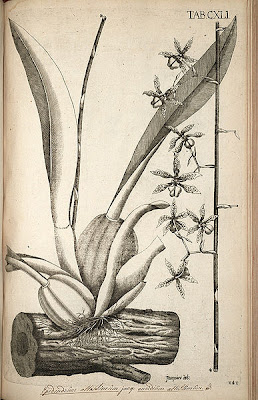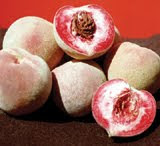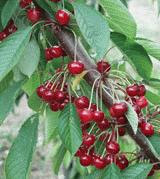
On New Year's day, I like to reflect a bit and think about what to change in the year ahead.
2010 sucked, for the most part. My Dad became increasingly frail, had a number of medical crises, and died. It's been hard trying to know what to think about it. We all die some time, and we all lose our loved ones, and for most of us our relationships are not perfect. Over the past 2 years or so, there were many times I thought he would die, and basically did my grieving mostly before he actually died. But now he's gone, and I'm done worring about doing the right thing, or saying the right thing, or taking care of him, or keeping him from suffering too much. It's done. Except the times I worry about whether I was a good son. I tried.
This is a blog on the internet, so I can't talk about my job. All I'll say, is I did a lot of soul searching and, well, I can't say more. I'm still employed - better than the alternative.
I had a very rough year.
Working so hard, the garden went to pot. No, not THAT pot - please, the most exciting thing in my garden is the chili peppers and tomatoes. That being said, the peppers were the best I ever grew, but I worked so hard I never got out to harvest many, and a lot went to waste. So did a lot of tomatoes, apples, and grapes. And strawberries. And beans dammit. And (oh the horror!) some of the figs went un-picked. It started out good, but when things ripened, I just didn't have a chance to get out there and get them. Much of the front went to weeds, which will take some time to clear out.
I didn't have a chance to cover the peaches for the winter, so expect to lose next year's crop to peach leaf curl. We'll see.
 New Years' Resolutions.
New Years' Resolutions. These are not things that I promise myself, they are how I hope to make improvements and have a better year.
At work, I took a huge
pay cut, in hopes of
working fewer hours. It's not win/win (mostly it's lose/lose) but we have to do what we have to do. I hope living is a little better for it this year.
This year I'll
finish the final bathroom. Not that big of a project, really, and it's the basement bathroom, so it's not sitting there staring at me like the master bath did for 2 years. No pressure, just a little at a time.
I'll
cut back some on the garden. The front
mini-orchard will have
grass instead of mulch, except a couple of feet surrounding each tree. Grass doesn't get as weedy and is easier to maintain. I already spread grass seed this fall, so this resolution is already under way.
I discovered an
organic weed killer made from citrus oil (I think - It's "
Worry Free Weed And Grass Killer" and contains a citrus extract, d-limonene as the herbicidal compound). I can spray that in places where weeding is a big hassle. Such as on the mulch around the fruit trees, where the kitty cat digs it up and creates nice fertile miniEdens for weeds. I tried it this fall on some of the irises, which are very difficult to weed by hand, especially when infiltrated with that &@^#*%!
Aegopodium podagraria (bishopweed) and I think it worked, without killing the irises. Anything that kills
Aegopodium can't be all bad, even plutonium. I bet the *$&#^*
Aegopodium is growing around Chernobl. Anyway, if the Avenge is effective, that will
reduce labor a lot. I've been trying to kill of the damn bishopweed for 9 years, but it got ahead of me again in 2010 and a lot of ground was lost. So I'll try it next year, including the rose bed and under the fruit trees, when weeds infiltrate the mulch. I wonder it kitty cat will like the smell?
Raised beds and barrels are definitely the way to go, when possible. I'll add a couple, and definitely reuse the ones I have. Here, the extra warmth gives a head start, and weeds are a non-issue in the potting mix.
I may
remove a couple of non-performers. That's hard for me to do. "Just one more chance". I have an apple and a fig in mind. And one grape vine, although it's not performing due to location. Maybe I'll take a cutting and plant it in a different spot - that grape is a tasty variety.
I will be
less of a purist about "sustainability" - for example, when I get a big pile of prunings, I'll take them to the recycle center, for them to grind and compost them, instead of me chopping them into mulch. And while there, I'll get a truckload of compost for the return trip. That will save a lot of time and effort. That's also the issue with grass in the "mini-orchard" - although since I let the lawn go dry in the summer and almost never fertilize, the only energy input is into mowing, and much of that is with a handpowered push mower. Well, maybe the grass is not less sustainable than the mulch.... (Thinking as I write).
So that's about it.
2011 will be more about cutting back,
lower expectations, and
compromise. And maybe a chance to smell the roses. But it will still be about lots of fruits, vegetables, and flowers. Especially since so many are already established, so most of the work is done, and just need a little trimming and cleaning up.
 This image is from wikimedia commons, "Illustration of Oncidium abruptum (as syn. Epidendrum altissimum Jacq) Date 1763 from "Selectarum stirpium Americanarum historia" by Nikolaus Joseph Freiherr von Jacquin, Vindobonae (= Vienna), vol 2 pl 141, engraving by Joseph Wagner. Also known as Baron Nikolaus von Jacquin (1727–1817), He was born in Leiden in the Netherlands, studied medicine at Leiden University, moved to Paris, then to Vienna. Nikolaus von Jacquin was sent to the West Indies and Central America by Francis I between 1755 and 1759 to collect plants for the Schönbrunn Palace.
This image is from wikimedia commons, "Illustration of Oncidium abruptum (as syn. Epidendrum altissimum Jacq) Date 1763 from "Selectarum stirpium Americanarum historia" by Nikolaus Joseph Freiherr von Jacquin, Vindobonae (= Vienna), vol 2 pl 141, engraving by Joseph Wagner. Also known as Baron Nikolaus von Jacquin (1727–1817), He was born in Leiden in the Netherlands, studied medicine at Leiden University, moved to Paris, then to Vienna. Nikolaus von Jacquin was sent to the West Indies and Central America by Francis I between 1755 and 1759 to collect plants for the Schönbrunn Palace.


